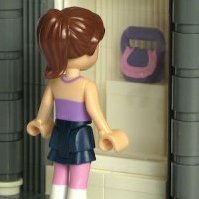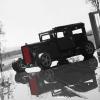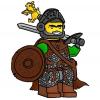Search the Community
Showing results for tags 'guide'.
Found 22 results
-

A Quick Start Guide to Brethren of the Brick Seas (BoBS)
Bregir posted a topic in Brethren of the Brick Seas
So you think you'd like to dive into the world of the Brick Seas, however there is so much to read and so many rules that you are not even sure where to start! Fear not, it's actually quite easy to get started and the community here is really friendly and will help you along each step of the way! Never be afraid to ask questions in the introduction thread or any of the faction threads (linked below). For now let's look at exactly what you need to do to sign up and get started in one post! Step One: Choosing a Faction The first step is also one of the most important - choosing the faction that your character will pledge allegiance to. While you are never limited to only building scenes within your faction's territory (in fact many challenges may require you to build in other factions), faction choice will impact your role in BoBS. There are many things to consider, what style suits your current Lego collection, what interests you, which part of the game you wish to focus on etc. etc. Even the number of currently active players in each faction may influence your choice. The most important thing however, is to choose a faction that you are going to enjoy and be motivated to build for! There are four playable factions in the game, let's have a brief look at each one to assist in your choice. Corrington Primary Lego Influence: Imperial Guard (Red Coats) Primary real world influences: Great Britain, Renaissance Sweden and enlightenment era Denmark-Norway The Basics: Science and the enlightenment are main national characteristics for Corrington, and their main source of income is from their strong merchant fleet. A strong navy is required to protect their maritime mercantile interests and this tends to be their military focus. Corlander's strive to bring order and structure to the world. Typical Quote: "That flower is beautiful. We must conserve it and bring it to the national museum." If you see your sigfig crawling through the jungle to find a beautiful flower - join Corrington. Read more: Corrington thread Eslandola Primary Lego Influence: Imperial Armada Primary real world influences: Spain, Portugal and the Netherlands. Also some of the merchant republics such as Venice, Milan and Lübeck. The Basics: Trade and profit are the main national characteristics for Eslandola. Although nominally ruled by a King, a trio of very powerful trade companies are the power brokers and have recently established a republic in the colonies. Their main source of income is through vast property holdings and they have developed a strong army and navy to protect and aggressively expand their interests. Typical Quote: "Enough profit for the day? Don't make me laugh!" If you see your sigfig crawling through the jungle to find a shiny city of gold - join Eslandola. Read more: Eslandola thread Oleon Primary Lego Influence: Imperial Soldiers (Bluecoats) Primary real world influences: Pre-revolutionary France and Imperial Austria The Basics: The main national characteristics of Oleon are deeply rooted in their strict adherence to the religion known as 'The Faith' which together with the strong aristocracy form strong bases of political power. A great love for art and culture as well as ancient artefacts is also a national characteristic together with their famous wine making skills. Like Corrington they have developed a strong merchant fleet and navy. Although historically Oleon and Corrington have been bitter rivals, relations have been improving of late. Typical Quote: "May Zeus and Poseidon guide your journey." If you see your sigfig crawling through the jungle to find a mystical artefact - join Oleon. Read more: Oleon thread Sea Rats Primary Lego Influence: Pirates Primary real world influences: Real world Pirates and free settlements such as Nassau. The Basics: The Sea Rats are basically anyone in the new world who owe no allegiance to any of the old world empires. These men and women go their own way. Some are fierce pirate lords, making a living terrorising the Brick Seas, others are peaceful merchants who refuse to bend the knee to any King, and some settle down at a romantic place in the colonies. The Sea Rats are a loose confederation with no central authority, whose binding characteristic would probably be the fierce defence of their freedom to live life completely on their own terms. Typical Quote: "What? You've never heard the tales of the reckless Benjamin Morgan? Benjamin, brave and bold? Dread Pirate Captain Morgan, on his legendary ship, the Queen Annetta's Revenge? Morgan the Moray?" If you see your sigfig crawling through the jungle... because it has an utter disregard for the rules - join the Sea Rats. Read more: Sea Rats thread Once you have chosen a faction, you are ready to move to step 2 and start building! (Next post)- 32 replies
-
- new
- walkthrough
- (and 4 more)
-

Lego Technic Guides
Newest_Tech320 posted a topic in LEGO Technic, Mindstorms, Model Team and Scale Modeling
I am looking to see if anyone knows a good video or article that would be good for explaining the types of lego technic parts. I know Sariel has his book, but I need something that I can link. -
I always build my MOCs in Studio first, and time and time again I found myself wishing I had a Lego color chart that would not only be a reference to identify colors, but would also help me decide on colors for my designs by allowing me to try out different patterns, so I created this: (Click on it to see the full size. It shows colors as rendered in Studio with these settings: Asteroid, Intensity 1.) At the moment, it’s not possible to build it, because many colors don’t exist as 1x1 bricks or 1x4 tiles, but I would really like to have this made of real bricks, so I also submitted it on Lego Ideas. The cards could then be used like paint swatches, you could hold a card against a MOC you are building to see which color would look best for a certain part. And the 1x1 bricks (plus 1x2 tiles for transparent colors) would allow us to experiment with colors and try out different color patterns, like this: I also designed a little display stand to hold the cards: If Lego releases new colors, it would be easy to update the cards either by expanding them with a second plate or by replacing colors that you don’t use often with the new colors and keeping those that you rarely use on an extra plate that you store away. Lego could sell the parts you need to update your chart in the ‘Pick a Brick’ section. I have also considered the possibility that it might not be possible anymore to manufacture some of the older colors. If that is the case, my proposal would be to print a background as close as possible to the color it should be on white tiles and white bricks so you can still get a good idea of how it looks. You would then have the possibility to replace those printed bricks with already existing bricks of that color if you wish, which would be better than not having them at all. (But at the end of the day, Lego would decide which colors they want to include or not.) I know that only very few ideas have been approved by Lego lately, so if you can think of any improvement that you feel might give it a better chance of being approved by Lego, let me know. Here is the link if you would like to support it on Lego Ideas: https://ideas.lego.com/projects/f44b1d7a-efa5-422d-ae0b-d8ac6e313082
-
Hi all, given that I'd like to build my own modulars, I need to learn how to use a 3D program and my choice has been Stud.io. Do you know if there is a guide, a 101 collection of tips, tricks, and hints or beginner projects to follow for a newbie? Thanks in advance!
-
Hello Eurobricks, some unestimated trouble occured in some of my latest Bricklink orders. I want to share it here as it seems the problem gets more frequently. Most parts, especially those with studs are easy to distinguish, but it gets tricky when it comes to technic liftarms and connectors or even axles. Maybe someone can help me with axles in different lenghts as i haven´t found a method to check them. The newer 3l has the Lego CR on the front, but older ones?? Best regards Gerhard
-
Hello, The third edition of The Unofficial LEGO Color Guide is now available. It includes two new colors and many design improvements. I am finally pretty much satisfied with the book. Please notice that the printing process remains a challenge since CMYK printing is not able to accurately reproduce some LEGO colors, in particular light greens. If you want the maximum color accuracy then you need to purchase the PDF version. Your computer screen is much better at showing colors than pigment based printing.
-
Thanks to Sandy for the banner! Introduction “Ah! Hello there! You must be the new class of students. Welcome, welcome! I’m Bilbert Wigglepike, adventurer, playwright, and actor extraordinaire! Of course, as theatre enthusiasts, you must have seen my gripping yet hilarious comedy, The Life of Beasley? No? What about my romantic classic Gnomeo and Harriet? Rated eight thumbs up by that unlucky critic who took the Zeigfried girl’s seat! Really, no? Well, surely you caught my dear friend Elphaba’s autobiographical musical Wicked during her short time here? No?!? My goodness, you need more help than I thought!” “I can teach you to bewitch the mind, to ensnare the senses, to pull at the very soul of all those who see you. Not through sorcery, trickery, alchemy, but through your own quirks, history, and emotional honesty." "I warn you: it will not be easy. Crafting interesting characters is a work of intention more than of luck. It requires concentration, focus, and determination. But for those who persevere...well, generations of actors have hungered after the joy of performance, the adulation of a pleased audience. And some small degree of that unique, exquisite satisfaction...can be yours.” “And let me say this: acting, or, as I prefer to think of it, role-playing, is Serious Business. I will not tolerate any foolishness...” “...hijinks...” “...shenanigans...” “...or tomfoolery of any kind in my Theatre!” “...Oh, who am I kidding?” “*Sigh* Welcome to Heroica Theatre...” Heroica Theatre is an Out-Of-Character discussion topic, where various thoughts, ideas, and advice about portraying your character can be discussed. Along the way, Bilbert and his troupe of performers (including several familiar faces!) will illustrate some of the concepts being discussed. But don’t let that stop you: any topic related to any aspect of roleplaying is welcome at any time. And feel free to be creative; who knows? Maybe you will be the Heroica Theatre’s next great star... Opening Night: The Roleplaying Basics Act I. Creating an Identity: Character Story Inspiration “This man was crushed by anvil. I...never seen thing so gruesome.” “I understand, Hoptet. After all, murder is…heavy stuff.” YEAAAAAAAAAAH! “...” “...” “Wanna get a banana burger?” “OK.” To sum up the acting technique of “transference” pioneered by the great actress Uta Hagen, one might say that “Acting is about finding ourselves within the character, and the character within ourselves.” Roleplaying is much the same; though the form and style may be different, it is still about taking elements of ourselves, combining them with elements we consider to be not of ourselves, and using them to create an entirely new character to display to the world. The primary difference between acting and roleplaying is, in roleplaying there is no set script, and the players together combine their talents to breathe life into the world. Even the greatest players in the world can’t play a character that is undefined, however. There’s a reason we don’t read books about speechless, lifeless, immobile statues; it would be dull and uninteresting. A character without their own defining traits has little more life than one of those statues. Roleplaying great Waterbrick Down once said this: If you get stuck, remember some of the basic questions: who, where, when, why, and, later on, how. Who was my character raised to be? Where was he/she born, where did he/she live before coming to Heroica? When did my character leave home and come to Eubric? Why did my character leave home and come to Eubric? Remember, too, that great characters are defined by contrasts, the difference between who they should be and who they are; consider: the sacrilegious, irresponsible paladin with a drinking problem, the ex-bandit ogre with a noble spirit, the wacky, comedic magician marked by darkness, the 200-year-old Elf with the maturity of a teenager, the rogue with a heart of gold, the quirky chicken sidekick who’s actually a demon of darkness, the honorable orc who becomes a paladin. Real people are messy and at times inconsistent; your character should be, too. Above all: your character should make sense to himself. All of our quirks and inconsistencies have some sort of reasoning or story behind them. You don’t have to know everything, but if you can have a few defining moments of their life set before you start playing, you’ll be in a good position to start off strong. If you can, from your character’s perspective, examine what you know about their history and find it reasonable and believable, then you’ve got a good base upon which later roleplaying can build. Coming Soon: Crafting a Back-Story: The Present as a Key to the Past Act II. Weaknesses and Strengths: Believability in Relatability: “Verily I say unto thee, Hoptet: he who had the less strength was the greater Hero.” “...” “What? I was channeling an ancestor of mine! Sheesh, kids these days...” Let’s be honest: a character that always succeeds, has no flaws, and never makes mistakes (or worse, who blatantly disregards their failures) is rather unlikeable. There’s an entire trope about Mary Sues and Marty Stus that cover exactly how they become unlikeable in far more detail than I can here. On the other hand, a character that tries to pour on the angst by constantly failing is no more likeable. The key is to find a good balance between the two, in order to make your character actually likeable. In all honesty, writing a believable, relatable character is kind of like trying to plan and host a game or a Quest; the key word here is balance, making your character strong enough, within reason, to believably handle themselves in the dangerous world of Heroica, while at the same time keeping them weak enough to, well, fail once in a while, which the dice WILL cause from time to time. This is doubly important in non-dice-based situations, where poor roleplaying can make you look quite silly indeed; if you’re a brand-new Hero who’s just arrived at the Hall, and you pick a fight with an experienced Hero with an Advanced Class, you are not going to be able to knock them out in one hit, no matter how poetic your description of the event; it’s just not believable. (This brings up another common roleplaying problem, one we’ll cover more in Act III.) Remember when we were defining the broad strokes of the character, adding depth through contradictions? That’s also a great example of balanced, relatable believability. Consider Lord Lawrence Boomingham, a mighty Paladin of Heroica. He is strong and hardy, as a Paladin he defends himself and his allies with his shield while also possessing the ability to heal them and himself when injured; a potent combination, to be sure. Bravery (bordering on impulsiveness and recklessness), combat skill and strength, and magical healing abilities are his strengths. However, he also has his weaknesses: he’s a chronic alcoholic, he’s brash, arrogant, rude, self-centered, racist, and, perhaps most tellingly for a Paladin, thoroughly irreverent. His strengths are balanced by his weaknesses, and though he may not always be likeable, he can be at times, and above all he’s always relatable. Let’s consider another great example: Althior Emorith, Sage. Armed with plenty of great gear, a magical sidekick, an Evoker girlfriend, and every single elemental Gem in existence, at first glance he may seem unstoppable, but he’s balanced out by his weaknesses. For one thing, Finnegan is incompetent, and in-character Althior isn’t much further behind. He’s a bit impulsive, has an ego the size of Jupiter, and takes himself and his work way too seriously. Althior also exhibits a different kind of dramatic balance; he straddles the line between “serious” roleplaying and comedic relief, at times the noble, troubled magician marked by the demon Abraxas himself, at others just a goofy loon. Character flaws are important, but this final observation is even more so: none of the best players in Heroica try to win all the time, and this is key. Good players let the dice fall as they may, and, when their character fails, they use it as an opportunity for character development. In Quest 4: Taming the Lions, De’kra the Shade Echo faced a string of horrifically bad luck. Rather than complaining, he used it as an opportunity to become more humble, even roleplaying his own “death” as a way to develop and flesh out his character. Likewise, in Quest 15: Hoisting Down the Jolly Roger, the Norse Barbarian Eric (and the entire party, actually) had to deal with short supplies and luck so terrible that the majority of the party went down in almost every battle! In a feat of great roleplaying that must be seen to be believed, Eric allowed this event to develop his character so much that it changed which Advanced Class he decided to take back at the Hall. Opportunities for character development can be rare, so failures are a welcome blessing in that regard. In short: don’t be afraid to fail! You might just end up more interesting because of it. Most importantly: don’t tell us all at once. Roleplaying requires patience; we don’t want to see the character’s whole story in an hour-long episode, we want to see it unfold over weeks, months, years. Coming Soon: The Road Goes Ever On: Playing your character for the long haul Act III. Characters in Conflict: Playing a Jerk Without Being a Jerk “All right, auditions for Elphaba’s yearly revival of Wicked are open once again, which means it’s time to figure out who is going to play who. Let’s see who we have here first. Roll call! De’kra?” “De’kra is present.” “Harriet? Mehmet?” “Harriet the Super Sleuth is here for the poultry and applesauce.” “As is Mehmet Attabar.” “I, Hoptet, ready.” “Drake?” “I’m here.” “And I’m here.” “And I’m here.” “And I am!” “Well, I was here before all of you, so...” “Shut up, Drake, you KNOW I was here before even you were.” “Please, Drake everyone knows all of you were here after ME!” “Hey, I’m here, too, you know--” “Uh, you guys do realize that multiple personalities do not qualify you for multiple roles, right? And, contrary to popular belief, it does NOT in itself make you more interesting, so--” “I disagree!” “Me too!” “I disagree as well!” “And me!” “*sigh*” “You and I are actually the same person, does that count?” “No, dear, we’re here as a joke, so we don’t count; we’re not real characters.” “NOT REAL CHARACTERS?!?!” “My parents are dead!” “Uh...sir, stories of familial death are rather overused as well, perhaps you should consider--” “DEAD!” “*sigh* Do none of you understand? Bizarre, over-the-top quirks of your personality are not what make for interesting characters! It’s conflict! Quirks define the personality, and conflict develops it! When used within reason, conflict can--” “RAAAAAAAH! HULK HATE PUNY GOD!” “Uh-oh.” “No, no, you've got it all wrong! To use conflict, you have to--” “HULK SMASH!” “That’ll teach you to run around with that no-good tramp Harriet!” “OW! I said I was sorry! OW! Finnegan made me do it! YEOOOOOOWWW!” “Well, at least SOMEONE'S using conflict right. Humorously, granted, but right.” “OW! OW! OW! OW!” “...help...OW...me...” “Ooh, looks like fun! Can I join in, Bilbert?” “ No, Harriet. No you may not.” There are three elements to every successful story: character, conflict, and creativity. We’ve already learned how to define the broad strokes of the character; now we move forward into the area that will bring your character to life: conflict. To explain why, let’s do a quick review: We’ve figured out what makes your character unique, we’ve made sure that the character’s quirks make sense, we’ve made efforts to keep the character believable, and, importantly, we’ve learned not to rush the roleplaying, but instead to keep things in reserve and reveal them over time, when the opportunity presents itself. You now have the makings of a deep, interesting, fun charcter--congratulations! There’s only one problem: how to reveal this? Where ARE the opportunities for character revelation and development? The answer, of course, is conflict, but there’s one more thing we must observe. Why ARE the rather annoying, overdone character aspects we saw a few moments ago so particularly prevalent? (Granted, these examples were rather over-the-top, but they are still remarkably common.) Why do new roleplayers perceive them (incorrectly) as THE go-to fixes for roleplaying*? Ironically, it’s because they instinctively recognize the importance of conflict, but fail to see opportunities for it outside of their own “bubble.” Conflict comes in two flavors: internal and external. Internal conflict occurs when two aspects of a character’s personality come into conflict; it’s an essential part of a realistic, honest portrayal of a character, but it is NOT the place to start your development. For one thing, internal conflict as a primary motivating factor is much better suited to novels, movies, and other works involving a single protagonist. In a world defined by the interactions between characters, external conflict is far more important; as roleplaying great Zepher once put it, External conflict, on the other hand, is not only a great opportunity for roleplaying, it’s also part of being a generous roleplayer; after all, since interaction with someone else’s character is a valuable opportunity for you, it stands to reason that it is just as valuable an opportunity for the other party. Character interactions are the heart of an open roleplaying community, and if you make an effort to help others’ characters grow, their own responses will return the favor. A word of caution, however: pets and other “companions” are NOT sources of external conflict; it may defy logic, but interactions between any characters played BY you are considered internal conflict. To put it another way, when two (or more) of your own characters interact, no matter what happens, YOU have determined the course and end result of the interaction; unless you are a superb roleplayer, there is little risk of anything happening that you didn’t already expect. By contrast, you never know where external interactions will take you; for example, Althior and Arthur’s interactions on Quest 17 led to an apprenticeship that neither party expected. As the old saying goes, “no risk, no reward.” So, how should you go about finding and using conflict? Here’s a hint: it’s not by walking up to another character and randomly punching them in the face, or challenging them to a drinking contest, or accusing them of burning down your home village. Such things, when planned in private with the help and consent of both players, can be dramatic and interesting both to watch and to play, but it’s seldom the place to begin. Just walk around, casually comment on the various conversations and goings-on of the time, and generally just react to things the way your character would. (Knowing to a degree what your character will do or say in a given situation is an important part of defining who they are, the “basic questions” of Act I will help again here.) Sooner or later, your character will say something another disagrees with, or they will say something your character objects to. Congratulations, you’ve just encountered external conflict! Now what? Do you punch them in the face now? Unsurprisingly, the answer is (usually) no. Often it’s best to let the conflicts simmer, lightly disagreeing as anyone would, but for the most part acting with composure and decorum. Only once your character has endured a realistic amount of provocation should they respond in kind. How much is enough? That varies by character. A roaring Barbarian brute would likely be more likely to lose his temper in an argument than a diplomatic Knight, but what of a Knight whose dead lover was an Orcish maiden, and the boisterous Cleric at the bar is boasting of his superiority over those “worthless greenskins”? In any case, the key is to wait for the right moment. Roleplaying is, really, an endless string of compounding reactions; for the most part, you can let the world itself get the ball rolling. One final tip: anger is not the only response to conflict; it’s simply the easiest. Using the example of the Knight with the dead Orcish lover, a new or intermediate roleplayer’s reaction might be to leap from the bar and deliver an angry tirade against the racist, self-righteous Cleric; a more seasoned veteran’s response, on the other hand, might go something like this: Kelwyn Greycloak felt an empty burning sensation in his gut, one that had nothing to do with the spicy meal Schezerade had set before him. He looked up across the bar at the arrogant Cleric. “Judge not what thou hast not seen,” he remarked coldly. Dropping a few copper commons on the table for the--ironically Orcish--barmaid, he set out for the balcony. Three years. Three years it had been since Kelwyn had lost her. As he reminisced about those happier days, he felt the Cleric’s eyes gaze contemptuously upon him, and he turned away, his body language declaring to all his desire for solitude. Not only is this a more unusual and interesting response, but it also allows for a more reasonable third party--perhaps a reassuring Ranger like Skrall, or the mostly-goofy but occasionally wise Mage Althior to speak to the Knight, showing a somewhat different side to their own character and allowing Kelwyn, in turn, to reveal more about his past to them. The reaction of Kelwyn to the Cleric allows other characters to react to him, and him to them, and so on and so forth. Less obvious choices like this one are more difficult than instinctive reactions, but they also allow greater opportunities than mere arguing or fighting. And make no mistake: good roleplaying is hard. But at the end of the day, it’s a greatly rewarding experience, and well worth the time and effort. Unusual roleplaying choices are often linked to characters with an unusual perspective on a given situation. Players who encounter difficulties in creating such unusual perspectives are encouraged to read about De’kra the Echo (played by Tanma), Cronk the Orcish Paladin (played by CorneliusMurdock), and the devious but not necessarily evil Lady Wren (an NPC played by Zepher). Coming Soon: Rush Hero: Exercising Patience in Roleplaying. Act IV. Burnin' Love: Cheap chocolates and rushed role-playing This Act has its own soundtrack . “When you meet the someone who was meant for you, before two can become one there’s something you must do.” “Do you pull each other’s tails?” “Do you feed each other seeds?” “No! There is something sweeter everybody needs…” “ I've been dreaming of a true love's kiss, and a prince I'm hoping comes with this, That's what brings everaftering so happy!” “ And that's the reason we need lips so much, for lips are the only things that touch. So to spend a life of endless bliss, Just find who you love through true love's kiss!” “ Aaaah, aaaah, aaaaaaaaaaaah!” “Aaaaaugh! Aaaaaugh! Aaaaaaaaaaaaugh!” “She been dreaming of true love kiss?” “And a prince she hope comes with this; That's what bring everaftering so happy.” “That reason she need lips so much?” “Yes, lips are only thing that touch.” “ So to spend a life of endless bliss, Just find who you love through true love's kiss!” “ You're the fairest maid I've ever met, You were made...” “ ...to finish your duet!” “ :sing: And in years to come we'll reminisce...” “ How we came to love,” “ And grew and grew love,” “ :sing: Since first we knew love through true love's kiss!!!” *applause* “Ahem. Yes, well, done good show everyone! There’s just one problem...it’s all absolute poppycock.” “Did someone say cock?” “*sigh*” Love. For some reason, it’s one of the most popular attempts at roleplaying. “I’ll say. ” You get out of here! Now, as I was saying, roleplaying romance is extremely common, to the point of being overused. The thing is, almost no one knows how to do it right. Here’s the thing: there’s more to love than rushed roleplaying and cheap chocolates. Love between your character and someone else’s should flow naturally out of good roleplaying in general, it’s not a “quick fix” for a character-developing interaction. How many couples do you know of in the real world who fell into instant, everlasting love at first sight? No, Haldor and Jess and Althior and Alexis don’t count. Now, if I had my way, no one would even try to roleplay relationships, it would just happen between characters--or not. However, since few people are willing to let such things develop, let’s go over some of the common romantic archetypes, and how to use them correctly. First up is the ever suave ladies’ man. This character is completely uninterested in long-term relationships and focuses primarily on the physical aspect of relationships. Note that, despite the term “ladies’ man,” this archetype swings both ways; Harriet the...playwright/actress is a prime example for those seeking to fulfill this archetype. Granted, she is rather unsubtle about it, but if you’re the type to try and force a relationship for your character then subtlety is most likely not your strong suit. One final note: the dramatic arc of “woman meets a ladies’ man and slowly but surely ‘tames’ him with her love” has been done to death. Don’t do it. Next up, we have the “dark but sexy” type, a.k.a. the “bad boy.” This character feigns indifference, which somehow just turns the ladies on. Gods help me if I know why. Expect to see a LOT of skin-tight leather, especially if the character is a woman. By definition, most of these characters will be Rogues, but others can pull it off. This, too is overused, particularly for men. More often than not, you come off looking like an Edward Cullen knock-off, so keep that in mind before you try it. Finally, we have the desperate, failing nerd. This one is less overdone than the others, and is more forgiving as well, but take it too far and you could come off as obnoxious. This is best used as a jumping-off point for other interactions; i.e. as the final stroke of bad luck that sends the character down a darker path--as a defining character trait it gets stale fast. Really, roleplaying love is just like the real thing; if you try to force it, it’ll fall flat. Also, like characters themselves, relationships need flaws and foibles to make them more interesting--a pair of jaded, bitter exes are far more interesting after the breakup than they were during the “honeymoon phase.” In fact, generally speaking, relationships, whether they’re still going or not, are more interesting in retrospect. The start of a relationship is slow, awkward, and honestly difficult both to go through and to watch. Characters who have been together for a while (or who used to be together in the past but aren’t anymore) have a history and background together that lend each other an added depth. This is, at its heart, the purpose of good roleplaying: to give the other characters, through your own actions, and extra dimension of depth and interaction with which to work. In the specific case of relationships, the backdrop of the romance (or the loss thereof) lets the other character reveal aspects about themself that they might not otherwise get to see. And that leads us to my final point. Roleplaying relationships fail (in this case, “fail” means “to become uninteresting”, not necessarily “to break up”) for the same reason so many real ones do: the participants fail to realize that relationships are more about giving than getting. Relationships, when done well, are one of the single most effective ways to add depth and interest to your character. The thing is, you have little control over it; when you choose to build a relationship with another person’s character, you are putting your character’s own development in their hands, and they in yours. Those who recognize this responsibility, and who exercise it with care and discretion, are truly roleplaying greats. Despite my earlier, joking disparaging of their relationships’ origins, Haldor and Jess and Althior and Alexis are both excellent examples of this side of roleplaying; they really do bring out new aspects of each other, and open each other up to unexpected interactions that might not otherwise be possible. You all would do well to learn from their example. Curtain "Well, that's it for Opening Night! We hope you enjoyed it. Be sure to drop by often--I...erm...we're coming up with new plays all the time, and we're always open to comments and criticisms. Enjoy your time at Heroica Theatre!"
-

[Guide] Using Rebrickable to retrieve parts list from LDD
supertruper1988 posted a topic in Digital LEGO: Tools, Techniques, and Projects
I have noticed that there seems to be a lot of posts where someone shares an LDD file and then someone else has trouble uploading directly to bricklink. I have found a method that works pretty well and I would like to share it here. Please share your feedback and feel free to link to this topic if you find someone in the same situation. Supertruper's Guide to retrieving parts from LDD using Rebrickable Things you will need: Rebrickable account Bricklink or brickowl account LDD file of something you want to build Here are the steps after you have the things above. 1. Log into Rebrickable and navigate to the "My Custom Lists" section 2. On the left click "Add New List" 3. (Optional) rename your list using the "Edit List Details" button 4. Click "Import Parts" and browse or drag your LDD file 5. Click "Append Parts" From here the parts list will load but there will be color errors and Minifig parts do not come up correctly. There will also be no prints selected. Any printed parts will need to be updated. 6. Once all the parts are adjusted click "Buy Parts" from here you can add them to your Bricklink or Brickowl account Thanks for reading, please don't hesitate to provide feedback or corrections. Please also feel free to ask for help here and I will try to help you out as much as I know how. -

[Guide] Creating Building Instructions using LPub
Kristel posted a topic in Digital LEGO: Tools, Techniques, and Projects
Guide: create build instructions with LPub This is a guide to making your own instructions with LPub. There is a: Short Guide Walks through the basics of producing a set of instructions. Full Guide Provides more details on the main steps for making instructions and explains the main features of LPub. User's discussion You are encouraged to ask questions, provide constructive criticisms and suggest proposals to improve this guide and suit it to users' needs. This guide will be updated over time to reflect the frequently asked questions. A complete guide to using LPub can be found here. List of recent topics that are related with LPub and build instructions: Instruction Miner vs. LPub (-> Go) MLCad: hiding parts in instruction step but showing in BOM (-> Go) LPub and MPD Files (-> Go) Help to create digital instructions for a physical MOC (-> Go) LPub not showing my main assembly (-> Go) Better building instructions than LDD? (-> Go) Problem with MLCad and Lpub (-> Go) LPub tree step - how? (-> Go) ... Credits - Thanks to Kevin Clague, the creator of LPub. - Thanks to Jaco van der Molen for his complete LPub guide. Note: This guide was prepared using a Mac. There may be minor differences for the Windows version of LPub. -
We have quite a few indices and guides here in History, so instead of having 500 bazillion sticky posts, let's have a one stop shop for all your guides and indices! INDICES ======= Historic Themes Review Index -Click me for browse the Reviews for Historic Themes. Lord of the Rings Review Index -A Collection of LotR Reviews. Lord of the Rings MOC Index -Click me to see a chronological index of MOCs from your favorite film franchise. The Hobbit MOC index -Click me to see a chronological index of MOCs from your other favorite film franchise. Guilds of Historica MOC Index -The Castle MOCers paradise! Click me to browse the Guild MOCs. Western Moc Index GUIDES ======= Derfel's Detailed Guide to Building a Medieval Village -The master, the legend, the guide of all guides. See DC's secrets here! -Derfel's Guide Discussion. kabel's Medieval Ships Guide -His name might not be capitalized, but his guide is quite "capital". Damaximus's Wall Shield Decoration Guide -A fun technique to decorate walls. Venunder's Tree Building Guide -Want to add some trees to your builds? Find out how to build one here! Small Tree Tutorial Masa's Palm Tree Tutorial Roof Techniques Snot Rock Tutorial - build sedimentary rocks, by kabel
-
THE UNOFFICIAL LEGO® TECHNIC BUILDER’S GUIDE: 2ND EDITION INTRODUCTION November 2012. That was the month that Nostarch Press released the first edition of the Unofficial LEGO Technic Builder's Guide. Written by, arguably, the most skilled LEGO (Technic) builder we all know. This book was the first to deal with all the aspects of building LEGO Technic models. October 2016. Four years after the 1st edition, the 2nd edition has been released. With 42 additional pages, this volume has even more content than its predecessor. The author, Pawel "Sariel" Kmiec, is a LEGO enthusiast based in Warsaw (Poland). He runs a well known blog on Sariel.pl and he is a respected member of our Eurobricks community. The book has been technically reviewed by Eric "Blakbird" Albrecht, who runs the Technicopedia and is also a well respected member of the Eurobricks community. Sariel and Nostarch have given me the opportunity to review this book. I'm very thankful for that! Obviously, I am very sorry that I haven't published this review earlier, but life happens sometimes. TABLE OF CONTENTS Below is a rundown of the contents of the book. Four brand new chapters have been added to the 2nd edition and thirteen have been updated and extended. A total of 25 chapters comprise the entire volume of this latest edition. A whopping 394 pages of pure LEGO Technic pleasure, which is 42 pages more than the 1st edition (352 pages). Part I: Basics 1. Basic concepts (updated) 2. Basic units and pieces (updated) 3. Studless or Studfull? 4. Axles, bushes, and joints (updated) 5. Wheels (new) Part II: Mechanics 6. Gears and power transmission basics (updated) 7. Chains and pulleys (updated) 8. Levers and linkages 9. Custom mechanical solutions 10. The LEGO pneumatic system (updated) 11. Pneumatic devices (updated) 12. Building strong (updated) Part III: Motors 13. An inventory of LEGO motors (updated) 14. LEGO Power Functions system 15. LEGO RC system (new) Part IV: Advanced mechanics 16. Wheeled steering systems (updated) 17. Wheeled suspension systems (updated) 18. Tracked vehicles and suspensions (updated) 19. Transmissions (updated) 20. Adders and subtractors 21. Planetary gearing (new) 22. 3D printing custom pieces (new) Part V: Models 23. Form vs. function 24. Scaling a model 25. The modeling process PART 1: THE BASICS BASIC CONCEPTS The book starts with some basic concepts, like speed, torque, power, etc. This all seems quite obvious at first, but reading them does provide some interesting insights for both beginning and experienced builders. I found the sections about camber angle, caster angle and toe angle particularly interesting. BASIC UNITS AND PIECES The next chapter explains what FLU (Fundamental LEGO Unit) entails. It tells us that the width of a 1x1 brick is 8mm. This knowledge allowed me to answer that there are approximately 31 two-by-four bricks in a meter during our last annual Eurobricks Event. That's why you always need some basic knowledge when it comes to LEGO units This chapter also discusses the available pins and their characteristics. STUDLESS VS STUDFULL Something that has been keeping the community busy for quite some time is the debate about Studless vs Studfull (intentionally written with two L's). While Studless building is here to stay, there are lots of people still building Studfull. This chapter provides some useful insights when it comes to both building techniques. AXLES, BUSHES AND JOINTS The next chapter describes every axle, bush and joint. Together with the chapter about pins, this will prove to be very valuable information, especially for people getting back into the hobby. WHEELS Recent years have given us lots of different new rims and tires. This chapter describes most of them, explaining what the difference is between top speed and acceleration. It even describes some of the popular 3rd party wheels for truck trials etc. This concludes the first part of the book. PART II: MECHANICS GEARS AND POWER TRANSMISSION BASICS Having discussed the basics in the previous chapter, we are ready to dive in the mechanics. Mechanics are the heart of Technic and they define what Technic makes Technic. The first chapter about Mechanics is about Gears and Power Transmissions. An elaborate gear ratio table is included to calculate every possible gear ratio. Sariel also has an gear ratio calculator on his website. All the different gears are discussed, much like the pins and axles. I really do like these chapters, since the provide a nice overview for beginners and experts alike. CHAINS AND PULLEYS One of the chapters that deals with things you might not think of every day. Chains and pulleys can be quite useful though, so having some basic knowledge is imperative. The section about the different pulley setups is very interesting and useful. How many of you know what a "threefold purchase" is? I reckon, not a lot. LEVERS AND LINKAGE Levers can be found on many Technic models, but using them in a MOC can be more difficult than you would imagine. This chapter provides useful insights on using levers and linkages. CUSTOM MECHANICAL SOLUTIONS This chapter is about custom mechanical solutions, like custom differentials, differentials locks, rachtes, lineair clutches, and them some. PNEUMATIC SYSTEM The (new) Pneumatic System gets a lot of attention. The different pumps and actuators are discussed. PNEUMATIC DEVICES The next chapter shows a variety of pneumatic devices made using the pneumatic system. The picture below shows an example of a pneumatic compressor. BUILDING STRONG The last chapter in Part II explains why things will fall apart when we don't build strong. It's about finding weak links and understanding where to reinforce. PART III: MOTORS MOTORS The third Part of the book is all about Motors. It starts with an overview of every motor ever produced by TLG, even the watertight motors for propelling LEGO boats. LEGO POWER FUNCTIONS SYSTEM Chapter 14 covers the complete range of Power Functions (PF for short) elements. It's a nice summary of the total range and it even includes building instructions for a Remote Control with Central Steering Wheel. THE RC SYSTEM The third and final chapter in Part III is about the RC system. While the RC system hasn't been around for some time, it is still widely used by car builders. It allows for RC cars with relatively high top speed and high torque, compared to the current PF system. PART IV: ADVANCED MECHANICS WHEELED STEERING SYSTEMS After lots of interesting chapters we have come to the fourth Part, covering Advanced Mechanics. This sounds interesting! And obviously it is very interesting. It starts with an elaborate chapter about wheeled steering systems, covering quite a few different mechanisms. The picture below shows the Ackermann Steering Geometry, which is a well known system. WHEELED SUSPENSION SYSTEM What's a steered vehicle without a proper suspension system?! Like the steering system, suspension comes in a wide variety. Quite a few of them are covered in this chapter, together with some building instructions. TRACKED VEHICLES AND SUSPENSION Since not every vehicle is a wheeled vehicle, tracked vehicles get their attention in the 18th chapter. Different track types and suspension systems are shown with detailed images. Even some custom made track types are covered. TRANSMISSIONS Chapter 19 is all about Transmissions, covering systems like orbital transmission, ratchet transmission, lineair transmissions and lots more. This chapter proves to be very useful when you are designing your own gear box and drive train. ADDERS AND SUBTRACTORS Adders and subtractors are mechanisms used to couple two motors together. Coupled motors can be used to control a single functions. Working on a big robot project myself, I probably need to couple two motors to drive the behemoth. You can couple motors the easy way and the right way. Sariel covers the right way to do this. He also covers the math to calculate the torque and speed. PLANETARY GEARING There's an entire chapter devoted to Planetary Gearing, a system used in some bicycles, different kind of toys and even in mechanical pencil sharpeners. 3D PRINTING LEGO Purists probably will skip this chapter, but for other people this can be very interesting. It's about 3D printing certain parts, which are not available as official TLG parts. You can think of hubcaps and turntables, but also of a mounting connector for a GoPro camera. The possibilities are endless. This chapter concludes Part IV of the book. PART V: MODELS FORM VS FUNCTION We have come to the last part of the book, Part V about Models. The first chapter is about Form versus Function. How can you make a model work well and look good at the same time. Finding good reference material is key when it comes to designing. SCALING A MODEL Blueprints are types of reference material which work very well when it comes to modeling. Together with Sariel's LEGO Model Scaler you will be off to a good start. THE MODELING PROCESS The final chapter of this part, also of the book, covers the modeling process. It's about turning your idea into reality. Which leaves us with one last question... SUMMARY Whether you are a skilled builder or a novice, this book contains a wealth of interesting information. It is without a doubt the most comprehensible builder's guide to LEGO Technic. I highly recommend picking up a copy and enjoy the read! PROS The books looks fantastic. Full colored pictures on every single page. A wealth of interesting information. Useful for both novice and advanced builders. Great reference book. CONS This book offers little playability. Turning pages becomes cumbersome after a while. The parts are all glued together, which is probably why it's not an official book. Building experience is virtually non-existent. The title is incorrect. Obviously, it should have been "The Official LEGO Technic Builder's Guide" Obviously, I'm joking with the Cons. I rate this book a solid 9 out of 10. Why not 10 out of 10? Because there will probably be a third edition and I need to keep Sariel sharp CONCLUSION SHOULD BE TITLED OFFICIAL BUILDER'S GUIDE
-
I finally took the plunge and bought my first PF train set. And I'm not ashamed to say I'm now addicted to making train things in LDD and Stud.io. Here's my first completed train car. A passenger car to match the colors of the Cargo Train set engine. As always (well most of the time), the build guide is available at charlesp.org
-

Create PDF from LDD Build Guide
Jarema posted a topic in Digital LEGO: Tools, Techniques, and Projects
Can someone point me to topic or software, that can generate cute PDF when LDD finished generating HTML building guide activated by shortcut CTRL+H. -
Sir Glorfindel goes for a peaceful walk in the snow with his loyal husky. Snowy landscapes are one of my favorite things to build, and they are something you don’t see all that often in the LEGO community. I made this MOC to serve as a tutorial for snow-scapes. Hopefully it's helpful, and comments/suggestions for the build are welcome
- 14 replies
-
- mitgardian freebuild
- snow
- (and 6 more)
-

Lego Technic Shock Absorber Spring Rate Guide
Doc_Brown posted a topic in LEGO Technic, Mindstorms, Model Team and Scale Modeling
Hey Everyone! I had an idea to create a guide showing various shock absorbers being decompressed to help anyone trying to guess what springs to use on their Mocs if they know roughly what weight it will be. I tired to press down on each spring at around 90% without bottoming out, to give an idea of the maximum weight each one can take. All springs used are in very good condition, with the exception of the Pneumatic one which grinned a bit, but being almost 20 years old we'll let it off! Anyways I hope this is useful, let me know if you have any suggestions or can give info on the last spring which I don't have. Cheers.- 13 replies
-
- Lego Technic
- Shock Absorber
-
(and 1 more)
Tagged with:
-

[MOC] Reverse build, PATRIA AMV 8x8 "Instructions"
Doc_Brown posted a topic in LEGO Technic, Mindstorms, Model Team and Scale Modeling
Ok so "instructions" is pushing it, more like sped up visual guide. haha. I recorded this more for my record really, but if anyone is interested in checking it out, pretty cool to watch. If only we could build this fast! More pics can be found here. Its functions are: 4x XL Motors for propulsion 1x Servo for steering 3x M Motors for Turret and Rear Door 3x PF Lights Full Independent suspension 8x Ansmanns 1.9” Tires “Twin” 2 Speed Differential Gearbox Specs: 71cm (L) x 21cm (W) x 27cm (H) 5.6KG Weight Original video -
This is the LEGO sculpture of a fat boy who wears glasses. In case you are interested in how it is built, click this link: https://www.facebook...16292386&type=1
-

30 projects in 30 days - Lego Architecture Studio 30-day challenge
henrysunset posted a topic in Special LEGO Themes
I wanted to share a project that I'm doing which I think will be interesting to the members of this community. I've recently purchased the Lego Architecture Studio set, and I created a personal challenge to build 30 models with the bricks from this set in 30 days. Each day, I create a new building challenge to try and build, and I've already completed 9 models so I'm almost 1/3 of the way done! I hope that others will take the challenge, either by doing the same 30 challenges I've done, or expanding the idea with new challenges to try. Learn more about the project: http://tomalphin.com...-challenge.html Please take a look and let me know what you think! I'm especially interested to hear if others have taken on similar personal challenges, or if you have idea of other challenges I should try... Sincerely, ---tom Gallery of a few of the projects I've built so far: Lego Challenge #8: Make a model of a piece of furniture Lego Challenge #5: Build a model based on an architectural style Lego Challenge #2: Build a microscale home, then a bigger model with more details. Lego Challenge #9: Fire Lookout Tower -
This is a guide for what's the cheapest way to build an army for each Raven, Crocodile, Wolf, Eagle, Gorilla, and Lion. I have wanted to make this for a while and finally got around to it today. (this is based off of prices on amazon on august 17th 2013). I will try to stay away from speedorz as much as possible, since I really don't like them. Raven's The cheapest way to get raven's is to get the Razcal's Double Crosser polybag ($8.87), but just barely, the Rizzo minifigure is for sale without a set for $8.98, the closest set is the Razcal Glider $9.48, all of these options are cheaper to get two than the cheapest set with two ravens (Eris Eagle Interceptor which is $26.56). It all depends if you want a set or not, and how big you want the set to be, counting the number of pieces along with the figure, you would want the Razcal Glider, a full 73 pieces more for less then a dollar more Crocodile's The cheapest crocodile set is Crugs Swamp Jet which is for sale at 6.99, buying 2 of these is about the price of Crawley Claw Ripper which has only one crocodile, but again the polybag's don't have a good price to piece ratio, the Claw Ripper has a much more reasonable ratio. Wolf's Since the wolf's only have a handfull of sets under $20.00 and none of them have 2 figures, this is easy, Winzar's Pack Patrol is $7.70, and winzar as just a minifigute is 2 dollars more expensive, and the next cheapest wolf set is the Ice Tower Speedorz for $11.97 go with the polybag it's the best price for a wolf. Eagle's Because the cheapest set with 2 eagles is $49.95 we have to go single, The cheapest with single eagle is Ewars Acro Fighter which is $9.99 more expensive than the earlier polybags but not 49.95. Gorilla's There are no Gorilla polybag's (yet) so you have to go loose or speedorz. the cheapest loose figure is G'Loona (11.79) but an army of G'Loona's would be a laughing riot you have to either go with Grumlo ($13.89), Gorzan ($14.89), or the Whirling Vines speedorz (14.99), I would go with Grumlo because he is the cheapest but still a warrior. I am not saying you can't go with G'Loona though, she is the cheapest but I wouldn't is all I'm saying. Lion's This was almost a blowout, Lennox loose minifigure is $3.98 but there is 1 left in stock, the next cheapest is Leonidas Jungle Dragster (11.95) which is the only polybag that really isn't worth it at this point the Razcal Glider is only $9.99 so this is a disappointment, it is the cheapest lion set, by 3 cents. the Jungle Gates speedorz is unfortunately the way to go, it's 3 cents more expensive for 51 more pieces, easy choice. Thank you for reading my guide, all feedback is welcome. I wish to offend none with my comments against speedorz or G'Loona.
-

Robert Munafo's Gear Train Ratios Guide
Alasdair Ryan posted a topic in LEGO Technic, Mindstorms, Model Team and Scale Modeling
I stumbled across this interesting site and thought I might share it with you all. For any one struggling on how to make there first gearbox or if you have a specific ratio but do not know to to achieve it then check out Robert Munafo's Gear trains page on his web site. His site walks you through all sorts of different rations and gives you a brief overview of gear ratios. -
LegoIDEASforYou posted two YouTube videos for the Lego Pneumatic fans out there: -- "Building Guide 1: Lego Front Wheel Drive With Pneumatic Steering": "This is a simple design for a front wheel drive axle with steering (the pneumatic steering is optional, it can be easily changed into normal steering). It is mainly designed for lego- trucks or trial wehicles. Features: tough, high-angle steering. Parts: 4 x TECHNIC ANG. BEAM 4X2 90 DEG - Black 4 x T-BEAM 3X3 W/HOLE Ø4.8 - Dark Stone Grey 8 x TECHNIC LEVER 3M - Black 1 x TECHNIC 5M HALF BEAM - Black 2 x TECHNIC 5M HALF BEAM - Medium Stone Grey 1 x TECHNIC 7M HALF BEAM - Black 4 x TRIANGLE - Black 2 x 1/2 BUSH - Medium Stone Grey 3 x 2M CROSS AXLE W. GROOVE - Black 10 x CONNECTOR PEG W. FRICTION - Black 12 x CROSS AXLE 3M - Medium Stone Grey 6 x BUSH FOR CROSS AXLE - Medium Stone Grey 2 x CONNECTOR PEG W. FRICTION 3M - Black 6 x CONNECTOR PEG W. FRICTION 3M - Bright Blue 1 x CROSS AXLE, EXTENSION, 2M - Medium Stone Grey 3 x CROSS AXLE 5M - Medium Stone Grey 4 x CROSS BLOCK 90° - Black 4 x ANGLE ELEMENT, 0 DEGREES [1] - Black 1 x BEAM 1X2 W/CROSS AND HOLE - Black 2 x CROSS AXLE 6M - Black 3 x DOUBLE CROSS BLOCK - Medium Stone Grey 1 x CROSS AXLE 5,5 WITH STOP 1M. - Black 1 x CROSS AXLE 9M - Medium Stone Grey 2 x UNIVERSAL JOINT - Medium Stone Grey 1 x TECHNIC CROSS BLOCK/FORK 2X2 - Black 1 x BEAM FRAME 5X7 Ø 4.85 - Medium Stone Grey 3 x CONICAL WHEEL Z12 - Medium Stone Grey 1 x DOUBLE CONICAL WHEEL Z20 1M - Black 1 x DIFFERENTIALE 3M Z 28 - Dark Stone Grey The portal axle mod for this one will come soon so stay tuned! You can use it as you wish but don't forget to sign where it came from when you make a video or picture of it. The lego digital designer save file can be downloaded from here: https://docs.google.com/open?id=0B53TLXnACl-BSnN0eDdERTFGbTA If you have any questions or you just want help, please write." * * * * * * * * * * * * * * * * * * * * * * * * * * * * * * * * * * * * * * * * * * * * * * * * * * * * * * * * * * * * * * * * * * * * * * * * * * * * * * * * * * * * * * * * * * * * * * * * * * * * * * * * * * * * * * * * * * * * * * * * * -- "Building Guide 2: Simple Rear Axle with Differential": "This is a simple design for a rear wheel drive axle. It is mainly designed for lego- trucks or cars. Features: tough, tolerate high pressure from the top. Parts: 4 x TECHNIC 3M BEAM - Black 4 x TECHNIC 7M BEAM - Black 4 x TECHNIC ANG. BEAM 4X2 90 DEG - Black 1 x TECHNIC 11M BEAM - Black 4 x TECHNIC ANG. BEAM 3X5 90 DEG. - Black 8 x TECHNIC LEVER 3M - Black 1 x TECHNIC 7M HALF BEAM - Black 6 x 1 1/2 M CONNECTING BUSH - Dark Stone Grey 2 x CONNECTOR PEG W. FRICTION - Black 12 x CROSS AXLE 3M - Medium Stone Grey 2 x BUSH FOR CROSS AXLE - Medium Stone Grey 10 x CROSS AXLE 4M - Black 12 x CONNECTOR PEG W. FRICTION 3M - Bright Blue 3 x CROSS AXLE, EXTENSION, 2M - Medium Stone Grey 2 x CROSSAXLE 3M WITH KNOB - Dark Stone Grey 2 x CROSS BLOCK 90° - Medium Stone Grey 2 x ANGLE ELEMENT, 0 DEGREES [1] - Black 2 x CROSS AXLE 7M - Medium Stone Grey 3 x DOUBLE CROSS BLOCK - Medium Stone Grey 1 x UNIVERSAL JOINT - Medium Stone Grey 2 x TECHNIC CROSS BLOCK/FORK 2X2 - Medium Stone Grey 2 x CROSS BLOCK 3X2 - Medium Stone Grey 2 x SHOCK ABSORBER - Bright Yellow,Black 1 x BEAM FRAME 5X7 O 4.85 - Medium Stone Grey 3 x CONICAL WHEEL Z12 - Medium Stone Grey 1 x DOUBLE CONICAL WHEEL Z20 1M - Black 1 x DIFFERENTIALE 3M Z 28 - Dark Stone Grey The brake mod for this one will come soon so stay tuned! You can use it as you wish but don't forget to sign where it came from when you make a video or picture of it. The lego digital designer save file can be downloaded from here: https://docs.google.com/open?id=0B53TLXnACl-BeXd0VjlUODNoOEE If you have any questions or you just want help, please write."
- 7 replies
-
- LegoIDEASforYou
- Lego
- (and 8 more)
-
BOOK REVIEW of The Unofficial LEGO® Technic Builder’s Guide Details about the 352-page work by Paweł “Sariel” Kmieć Title: The Unofficial LEGO® Technic Builder’s Guide Author: Paweł “Sariel” Kmieć Place of Publication: San Francisco, California USA Publisher: No Starch Press, Inc. Date of Publication: November 2012 ISBN-10: 1-59327-434-3 ISBN-13: 978-1-59327-434-4 Number of Pages: 352 Dimensions: 8” x 10” x 13/16” thick (20.2cm x 25.4 cm x 2 cm thick) Reviewed By: David G. Luders, a Civil Engineer with 15 years of LEGO Technic experience [NOTE: The publisher and the book’s author granted specific written permission to use the images and excerpts for this Book Review. This book is not authorized or endorsed by The Lego Group. LEGO® is a registered trademark of The Lego Group, but in this Book Review I use the word “LEGO” without the trademark symbol for readability.] INTRODUCTION: Paweł (Paul) Kmieć is a world-renowned LEGO Technic builder of over 120 advanced creations. Known as “Sariel” on his website, Facebook page, and YouTube channel, he is an “Adult Fan of LEGO (AFOL) from Poland. The book’s “Forward” (written by Fernando Correia, Editor in Chief, TechnicBRICKS.com) explains this book’s merits the best: “LEGO Technic expands the traditional LEGO System by providing a challenging building experience. [There are] three core concepts behind LEGO Technic — Authenticity, Functionality, and Challenging building….Modern LEGO Technic sets address these principles more effectively than ever….But many builders find freely building their own models difficult in this system, and that’s where this book comes in….Paul has unscrambled the secrets of Technic building in the best way I can imagine, and I’m delighted that his ideas are now available to all LEGO builders and fans. You will find many examples, tricks, and practical advice on assembling sturdy and useful mechanisms. You’ll also find detailed information on the history and evolution of LEGO Technic elements, for example, the LEGO pneumatic system’s evolution. “The Unofficial LEGO Technic Builder’s Guide will certainly help introduce many young builders to the creative possibilities of LEGO Technic. If you’re a beginner, you’re going to read the introductory chapters and start getting excited….If you’re an intermediate practitioner, it will take you to the next level. If you’re already an advanced builder, this book has those extra gems and inspiration to push you even higher. Despite my own considerable experience, I still learned quite a bit about Technic from reading the book. I hope that you will too.” BACKGROUND INFORMATION: I concur with the author’s objective for his book, where he wrote in the “Preface”: “Rather than giving you building instructions for complete LEGO models, this guide attempts to equip you for your own adventure with LEGO Technic. It does so by introducing the principles that make LEGO constructions work, and by showing you component mechanisms, such as transmissions or suspension systems, which you can then incorporate into your own unique creations. LEGO sets usually provide you with complete instructions and no explanation of how things work. I decided to take the opposite approach. I strongly believe that playing with LEGO is about unleashing your own creativity, and not about following instructions.” SUMMARY OF CONTENT: This book is well-written in an easy-to-understand style. This is important since many LEGO Technic fans worldwide do not have English as their native language. Navigating the book is simple via the 1-page “Brief Contents”, the 8-page “Contents in Detail”, and the 8-page “Index”. The Ebook version is similarly bookmarked in detail. The cover art and many of the book’s excellent illustrations were prepared by Eric “Blakbird” Albrecht, who also did the Technical Review of the manuscript and whose Technicopedia is an excellent reference. The author wrote that “This guide uses Bricklink’s part numbers, part names, and color names” to make it easy for the readers to obtain the parts shown in the many illustrations. The colors are clear and vibrant to help distinguish between the various LEGO pieces. CHAPTER 1 – BASIC CONCEPTS: 6 pages are devoted to “…the basic concepts we’ll be exploring as we build. Note that it aims for strictly practical knowledge. Its goal is to get you acquainted with the laws of physics involved in building working LEGO mechanisms, not to cover everything a practicing engineer or physicist needs to know.” These concepts are important for good LEGO Technic design and construction. There is a good balance between rudimentary explanations and information that is useful to advanced builders too. The author describes concepts that apply both to LEGO models and to real-world vehicles. CHAPTER 2 – BASIC UNITS AND PIECES: Via useful diagrams over 7 pages, the author displays the dimensions of standard LEGO System bricks and Technic bricks. Standard Bricklink terminology is used so that the reader understands the constructions in later chapters. Beginners can understand how certain-colored LEGO Technic connectors provide differing amounts of friction. Illustrations show various tricks of how LEGO “…bricks with plates can be repeated at regular intervals to align with beams.” I thought I knew all of the tricks, but I learned something new here. CHAPTER 3 – STUDLESS OR STUDFULL?: The newer “studless” LEGO Technic Liftarms (Beams) are compared with classic “studfull” LEGO Technic Bricks. The author explains that “The two styles are significantly different, and each offers advantages. The styles can also be combined in order to use the best qualities of each technique in a single construction. As a matter of fact, most of today’s LEGO Technic sets and MOCs (My Own Creations, a term builders use for their custom models) use a combination of the two approaches rather than a purely studless or studfull building technique.” This is what makes Sariel’s models so good – many of them have a realistic, refined look but good functionality. I learned something here too (about combining structures of even and odd width). From the publisher’s website, one can see his LEGO Kenworth Road Train model and the beginning part of this 14-page chapter: CHAPTER 4 – AXLES, BUSHES, AND JOINTS: Over 9 pages, the author demonstrates the usefulness of these parts, essential in most LEGO Technic models. He shows how “…you can use two half bushes to couple two switches in such a way that turning one switch on turns the other one off”, plus other uses that I didn’t know for these tiny parts. The book is full of such tips that get you thinking about the possibilities for your own models…. CHAPTER 5 – GEARS AND POWER TRANSMISSION BASICS: This 14-page chapter explains well the various uses and configurations of gears (possibly one of the harder things for beginners to fully understand about LEGO Technic). “A gear ratio is the relationship between the number of teeth in two interacting gears….A gear ratio is defined as follows: number of follower gear’s teeth [divided by] number of driver gear’s teeth…. We can use it to easily calculate how speed and torque are transformed between the two gears. Looking at the 3:1 ratio, we can tell that the speed is reduced by a factor of three, and since the decrease of speed results in an inversely proportional increase of torque, we know that torque is tripled.” There are 45 illustrations that show the characteristics of each type of LEGO Technic gear. CHAPTER 6 – CHAINS AND PULLEYS: As an example of the author’s clear writing style, he wrote: “The important characteristic of a chain is its behavior under torque. When a high torque is applied to gears meshed directly…it pushes them apart, which may cause their teeth to skip. But when a high torque is applied to gears connected with a chain, it pulls them together. This means that a chain has an advantage in high-torque applications: Gears connected with a chain don’t need a reinforced housing—the chain is something of a structural reinforcement itself.” String and pulley systems are shown in six of this chapter’s 10 pages. Using the diagrams, one can make “power pulley systems” with mechanical advantages ranging from 2 to 16. CHAPTER 7 – LEVERS AND LINKAGES: The author does a good job showing how levers can be used for crane booms and for the arms of front loaders. In 10 pages, he transitions from levers to linkages (which are used for pantographs and other devices). There are cool illustrations that show several linkage designs for rotating and lifting. CHAPTER 8 – CUSTOM MECHANICAL SOLUTIONS: The nature of the book changes here – now come the step-by-step Building Instructions that are prominent in the rest of the Guide. There are detailed diagrams for making “…mechanisms that extend the functionality of your constructions beyond the limits of ready-made LEGO pieces. Here you’ll find mechanisms that transform one type of motion into another, that take basic LEGO lights and transform them into sophisticated signaling systems, and much more. These mechanisms are fun to build just on their own as explorations of mechanical engineering concepts, but you’ll also find them quite useful when building larger models.” 25 pages are devoted to differentials (with and without locks), ratchets, clutches, eccentric mechanisms, Scotch yokes, Oldham couplings, Schmidt couplings, stepper motors, & Geneva mechanisms. Even though they sound exotic, the author explains them in terms one can easily understand. He also shows his solutions for vehicle reverse lights, flashing lights, turn signals, a double-axle turntable transmission, and a sturdy universal joint. Some of them are quite clever! CHAPTER 9 – THE LEGO PNEUMATIC SYSTEM: In 11 pages, the author presents an inventory and explanation of “old” and “new” LEGO pneumatic parts. It is great to see the entire system components explained so well; there have been few other references that describe the entire history (from 1984 to the present). He even gives advice on “turning your pneumatic system into a hydraulic one”. CHAPTER 10 – PNEUMATIC DEVICES: “This chapter presents devices that make creative use of pneumatic systems: motorized compressors, remote-controlled valves, and pneumatic engines. All these devices take advantage of the fact that the pneumatic system has been designed to be customizable, and there’s almost no limit to potential modifications. In this chapter, we’ll start by discussing the most basic and versatile devices and then move on to more sophisticated and specialized ones.” 22 pages show how to make a motorized compressor, a rocking compressor, motorized valves, an autovalve, automated pneumatic pressure switch, various pneumatic engines, and a working water pressure pump. LEGO Pneumatics fans will love this chapter. CHAPTER 11 – BUILDING STRONG: Through the author’s personal experience, he stresses the importance of reinforcing and bracing LEGO Technic models to eliminate weak links. Many diagrams show “the right way to reinforce” to prevent gear teeth from skipping. He provides Building Instructions to four reinforced differential casings and three reinforced worm gear casings. The remainder of this 24-page chapter covers load-bearing structures (such as his LEGO vehicle frames) and truss designs. LEGO bridge and crane builders may learn something new here. CHAPTER 12 – AN INVENTORY OF LEGO MOTORS: No reference would be complete without discussing the various electric motors made from 1965-Present. “While there is no official technical specification for the LEGO motors, LEGO enthusiast Philippe “Philo” Hurbain has spent a lot of time performing many complex measures on these motors. This chapter’s measurements are derived from his work and used with his kind permission. (Read more about Philippe’s work at his site, http://www.philohome..../motorcomp.htm)” This 8-page chapter includes the new LEGO Power Functions L motor and Servo motor, plus the updated (July-August 2012) tests on the LEGO 5292 RC motor. CHAPTER 13 – LEGO POWER FUNCTIONS SYSTEM: 18 pages are devoted to explaining the system components, in a better and more concise manner than what is presented on the official LEGO website (http://Powerfunctions.Lego.com). The author utilizes his extensive experience to give tips on the various Power Functions (PF) battery boxes and PF remotes. Building Instructions illustrate three different PF remote modifications. Linear actuator characteristics, PF extension wires, and miscellaneous PF elements are also presented well. Newcomers to the LEGO PF system will save a lot of time heeding his advice. CHAPTER 14 – WHEELED STEERING SYSTEMS: The author explains that “In this chapter, we’re going to learn how to build typical LEGO steering systems as well as how to implement optional features, such as return-to-center steering. We’ll also explore issues of steering geometry and multi-axle steering.” Ackerman steering geometry and the “convergence of axles” principles are clearly diagrammed for 4- , 6- , and 8-wheeled LEGO vehicles. I wish I had had these 12 pages when I was starting out in LEGO Technic. CHAPTER 15 – WHEELED SUSPENSION SYSTEMS: 38 colorful pages provide dozens of illustrations for LEGO Technic suspensions – “Now, we’ll take a look at two topics that are inextricably linked to steering axles: suspending axles and driving them….We’re going to discuss axles in four groups of increasing complexity: * Driven axles (those that receive power) * Driven and suspended axles * Steered and suspended axles * Driven, steered, and suspended axles After going through the first group, we’ll focus on the concept of suspending wheels; we’ll learn how suspension systems work, how they are categorized, and how to choose the suspension that best suits our needs.” Advanced builders are bound to learn something here, and employ the ideas in their LEGO Technic “supercars” and “trial trucks”. Advantages and disadvantages of each system are discussed, and there are several Building Instructions that prove most useful. CHAPTER 16 – TRACKED VEHICLES AND SUSPENSIONS: Over the years, the author has designed more than a dozen different motorized LEGO tanks. It is good that he provides his tips for cool “bogies” having shock absorbers and torsion bars suspensions. Here are two of the chapter’s 10 pages (from images provided by the publisher): CHAPTER 17 – TRANSMISSIONS: Advanced builders will enjoy the 26 pages of LEGO vehicle transmission designs and tips. They range from non-motorized and motorized 2-speed transmissions all the way to 5- and 10-speed transmissions. Studfull LEGO Technic Bricks and studless LEGO Technic Liftarms (Beams) are combined in colorful Building Instruction diagrams that are easy to follow. CHAPTER 18 – ADDERS AND SUBTRACTORS: The author has great success explaining these useful devices. “Adders and subtractors are mechanisms used to couple two or more motors together. Coupled motors are usually used to control a single function, most often the propulsion of a vehicle. They can work together (in an adder) or against each other (in a subtractor). Both mechanisms make use of differentials, and both are examples of advanced mechanics. The way subtractors work is particularly fascinating. You’ll find that using adders is a great way to give your motor even more power. Subtractors will be most useful when building tanks and construction vehicles, as these mechanisms have two outputs perfectly suited for controlling two treads.” Here are two of the 16 pages (from images supplied by the publisher); they show just a few of the Building Instructions provided in this chapter: CHAPTER 19 – FORM VS. FUNCTION: 11 pages show how models can be made to work well, look good, and accurately model a real-life object. Various types of wheeled vehicles and aircraft are shown. This chapter can be augmented by the author’s website, on which he presents more details about his LEGO Technic models. From the publisher’s website: CHAPTER 20 – SCALING A MODEL: The author is one of the few LEGO Technic builders who can design beautiful models that are properly scaled and realistic. In 8 pages, he provides the source of references, diagrams, and formulas so that the reader can be successful in modeling something new. Advanced builders employ these techniques, now within the reach of LEGO Technic fans. CHAPTER 21 – THE MODELING PROCESS: This final, 10-page chapter provides the finishing touches. “Size matters” when building LEGO Technic creations, as do the choice of wheels, colors, details, and controls. His tips help make the author’s creations distinctive in their form and function. RECOMMENDATION: The author wrote that this book “…gives you tools to explore—it’s up to you to provide the rest. Creating something new and seeing it work the way you intended it to is far more rewarding than building even the coolest LEGO set ever released. Enjoy creating.” In that regard, The Unofficial LEGO® Technic Builder’s Guide is a huge success. It inspires the builder and explains why things work. It is a compilation that can save you months (if not years) of trial-and-error work. It shares not only Paul Kmieć’s experience, but also that of Eric “Blakbird” Albrecht, Philippe “Philo” Hurbain, and several other prominent creators. I highly recommend this valuable reference to anybody (whether a beginner or advanced builder) wanting to enhance their LEGO Technic understanding. It should be the primary reference in every LEGO Technic fan’s library! * * * * * * * * * * * * * * * * * * * * * * * * * * * * * * * * * * * * * * * * * * * * * * * * * * * * * * * * * * * * * * * * * * * * * * * * * * * * * * * * * * * * * * * * * * * * * If you would like to order this book, it is available on the publisher’s website in print book form and/or Ebook. I’ve compared them side-by-side, and can attest that the print book has sharper lines and better color rendition than can be seen on a computer screen, or on a PDF page printed on a color laser jet. The print book is a great value at only USD $0.085 per page! No Starch Press is running a promotion for 40% off all of their LEGO books until October 31st, 2012. Use coupon code BUILDIT to get 40% off all LEGO books! Here are links to the deal and to the “tweet” -- http://nostar.ch/LEGO_promo & https://twitter.com/...159719098527744 . The book is also available at Amazon (item number 1593274343) and from BookDepository.co.uk: http://www.bookdepos...c/9781593274344 . See this of the various LEGO Technic creations made by the author: .
- 5 replies
-
- Unofficial
- LEGO
-
(and 6 more)
Tagged with:










